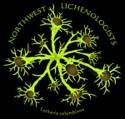For https://northwest-lichenologists.wildapricot.org/page-1816539/129626252#photo I think Pertusaria glaucomela. Perhaps someone can easily differentiate P. glaucomela and P. suboculata without P test.
used keys to Pertusaria suboculata or P. glaucomela
p 487 - McCune, Bruce. 2017. Microlichens of the Pacific Northwest. Volume 2: Keys to the Species.
potential distinguishing characteristics:
P. suboculata P+ O or R or P- ; P. glaucomelia P- (unfortunately! I don’t have P reagent)
spore length of P. suboculata > 21 µm; P. glaucomelia < 23 µm (mine average 25x14⇒P. suboculata)
P. suboculata 20-30x10-15; P. glaucomela 10-23x7-14
thallus both light gray (calling mine white), thickness overlaps with P. suboculata a bit thicker
disk P. suboculata pruinose; not mentioned for P. glaucomelia (mine epruinose ⇒P. glaucomela)
crenelate margin P. suboculata frequently so; P. glaucomelia slightly or entire (mine crenelate⇒P. suboculata)
epihymenium of both K+ strong violet
medulla P. suboculata K-; P. glaucomela K- or K+ yellowish or reddish brown (mine appears to be K-, difficult because so thin)
largest apothecium 1.5mm
LIAS has (min) 0.4 (low) 1.0 (high) 2.0
my specimen has birefringent crystals soluble in K in hymenium
found very few photos - P. glaucomela by McCune (Oregon Digital) somewhat resembles mine, iNaturalist photo Pertusaria glaucomela from Kodiak Island, AK, USA on July 26, 2017 at 10:39 PM by Masumi Palhof. On a Sitka Spruce twig · iNaturalist (id suggested by Toby Spribille) does not resemble mine
“We distinguish P. suboculata [from P. oculata] solely on the the basis of its lack of isidia” - Spribille et al. p490 Bryologist 113 (3) 2020 Lichens and lichenicolous fungi of the Klondike Gold Rush National Historic Park, Alaska, in a global biodiversity context (which makes me lean towards P. glaucomela because P. oculata looks very different, e.g. see Lichen Herbarium O)

